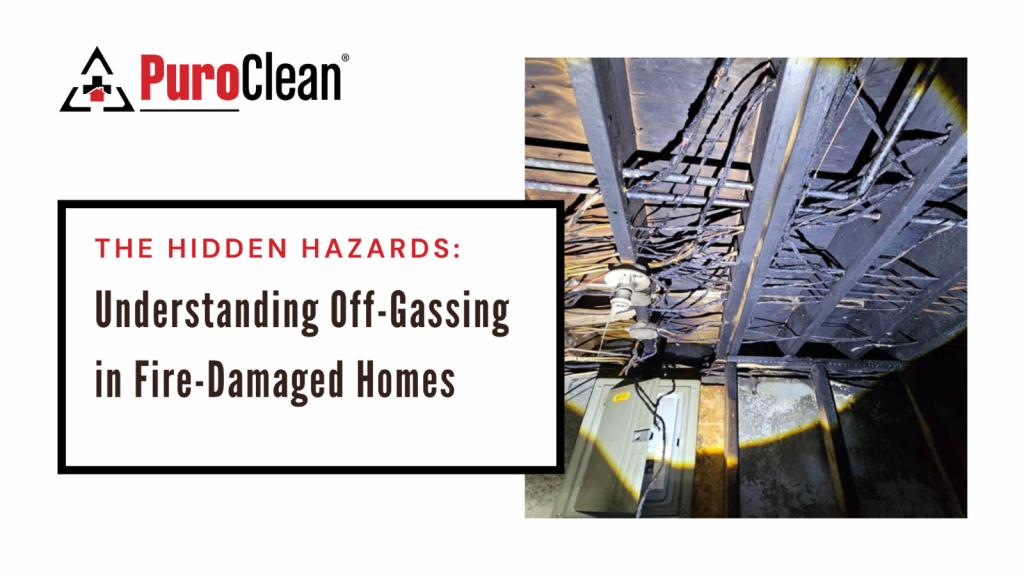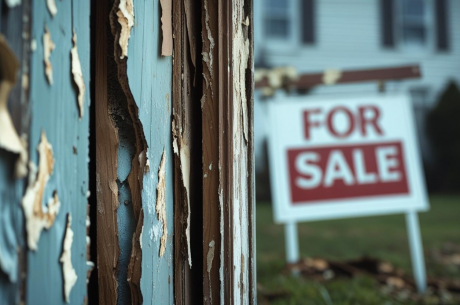Understanding Winter Fire Hazards & How to Protect Your Property
When temperatures drop, homeowners, business owners, and property managers in New Hampshire rely on heating systems to stay warm. However, the increased use of furnaces, space heaters, fireplaces, and electrical systems can pose serious fire hazards. Malfunctions, overheating, and improper use can quickly lead to house fires, causing extensive property damage and potential safety risks. When fire damages a property, the visible destruction is only part of the problem. Soot, odors, and hidden chemical dangers often linger long after the flames are extinguished. Understanding how soot travels, the hazards of off-gassing, and why professional remediation is essential will help you navigate the road to recovery.
At PuroClean of Strafford County, we specialize in fire damage restoration and help property owners in Rockingham, Strafford, Merrimack, Belknap, and Hillsborough counties recover quickly from fire, smoke, and soot damage.

How Soot Travels and Pro Tips for Identifying It
Soot is one of the most persistent remnants of a fire. Unlike ash, which is light and flaky, soot is composed of fine carbon particles that cling to surfaces and can travel far from the source of the fire. A common example of soot-related damage is a puff back, which occurs when a furnace misfires and releases soot into the home. Puff backs can coat entire rooms in a fine black residue. Soot can spread throughout your home, attaching to surfaces in every room. Its acidic properties can cause long-term damage, staining walls, furniture, and belongings. Prolonged exposure to soot can be harmful. Remember that addressing soot promptly minimizes long-term damage and staining. If you’re dealing with recent fire damage, act swiftly to clean and restore hard surface

Pro Tip: Use a Soot Sponge
A soot sponge is a professional tool that acts like a magnet, pulling soot from walls, ceilings, and furniture without smearing. By going room to room with a soot sponge, you can trace how far soot has traveled. This method is invaluable for identifying hidden areas of contamination and ensuring a thorough cleanup.

The Difference Between Cooking Oil and Electrical Fires
Not all fires are the same, and the restoration process varies depending on the type of fire:
- Cooking Oil Fires
- These fires often leave greasy, oily residues that cling to surfaces. Restoration requires specialized degreasers and cleaning solutions to break down the oils. Air scrubbers are used to improve air quality by capturing fine particles released during the fire.
- Electrical Fires
- Electrical fires may burn wiring, insulation, and plastic, releasing harmful chemicals. These materials produce dense, toxic soot that requires different cleaning methods and tools. Odor elimination often involves ozone treatments to neutralize smells at a molecular level.

The Hidden Danger of Off-Gassing After a Fire
One of the most dangerous but often overlooked aspects of a house fire is off-gassing—the release of harmful chemicals into the air as materials burn.
What’s Being Burned?
When a fire consumes a home, it burns:
- Walls and insulation
- Electrical cords and plastics
- Wooden structures (including pressure-treated wood, which releases chemicals when burned)
The resulting smoke contains carcinogens and toxic fumes that linger long after the fire is extinguished.
If the Fire Department Responded:
Firefighting efforts often introduce water, fire suppressants, and chemicals into the property. While they help extinguish flames, they can create secondary hazards like mold growth, chemical residues, and weakened structural components. Always follow fire department clearance guidelines before re-entering your home. In some cases, additional Personal Protective Equipment (PPE) may be necessary for safe entry.
Why Professional Fire Restoration is Essential
At PuroClean of Strafford County, we understand that fire damage goes beyond what’s visible. Our comprehensive fire restoration services include:
✅ Soot and smoke damage removal
✅ Professional air quality restoration with air scrubbers
✅ Odor elimination using ozone treatments
✅ Off-gassing risk assessment and chemical residue cleaning
We work directly with homeowners, insurance adjusters, and public adjusters to ensure a thorough and safe recovery process.
For expert advice, recommendations, or a free estimate, call us today at 603-664-3727 or complete a Contact Form and we will contact you! We proudly serve Southern New Hampshire and parts of Maine.
Where We Serve
If a fire damages your property, PuroClean of Strafford County provides fast and professional restoration services throughout Southern New Hampshire and Southern Maine.
✔ Rockingham County – Exeter, Hampton, Portsmouth, Salem, Londonderry, Windham, Derry, Andover, Newfields, Newmarket
✔ Strafford County – Dover, Rochester, Somersworth, Barrington, Rollinsford, Strafford
✔ Merrimack County – Concord, Manchester, Merrimack, Hooksett, Pembroke
✔ Belknap County – Laconia, Gilford, Belmont, Alton
✔ Hillsborough County – Nashua, Manchester, Bedford, Hollis, Goffstown, Merrimack

Comprehensive Fire Damage Remediation
At PuroClean of Strafford County, we specialize in restoring homes and businesses affected by fire damage. Our services include:
- Soot removal and surface cleaning
- Air quality restoration with air scrubbers
- Odor elimination using ozone treatments
- Thorough off-gassing risk assessment
We work with homeowners, insurance adjusters, and public adjusters to ensure every property is restored safely and efficiently.
For advice, recommendations, or a free estimate, call us today at 603-664-3727 or learn more by visiting our website at www.puroclean.com/psc-nh. We proudly serve Southern New Hampshire ( and parts of Maine).




 PuroClean of Strafford County
PuroClean of Strafford County